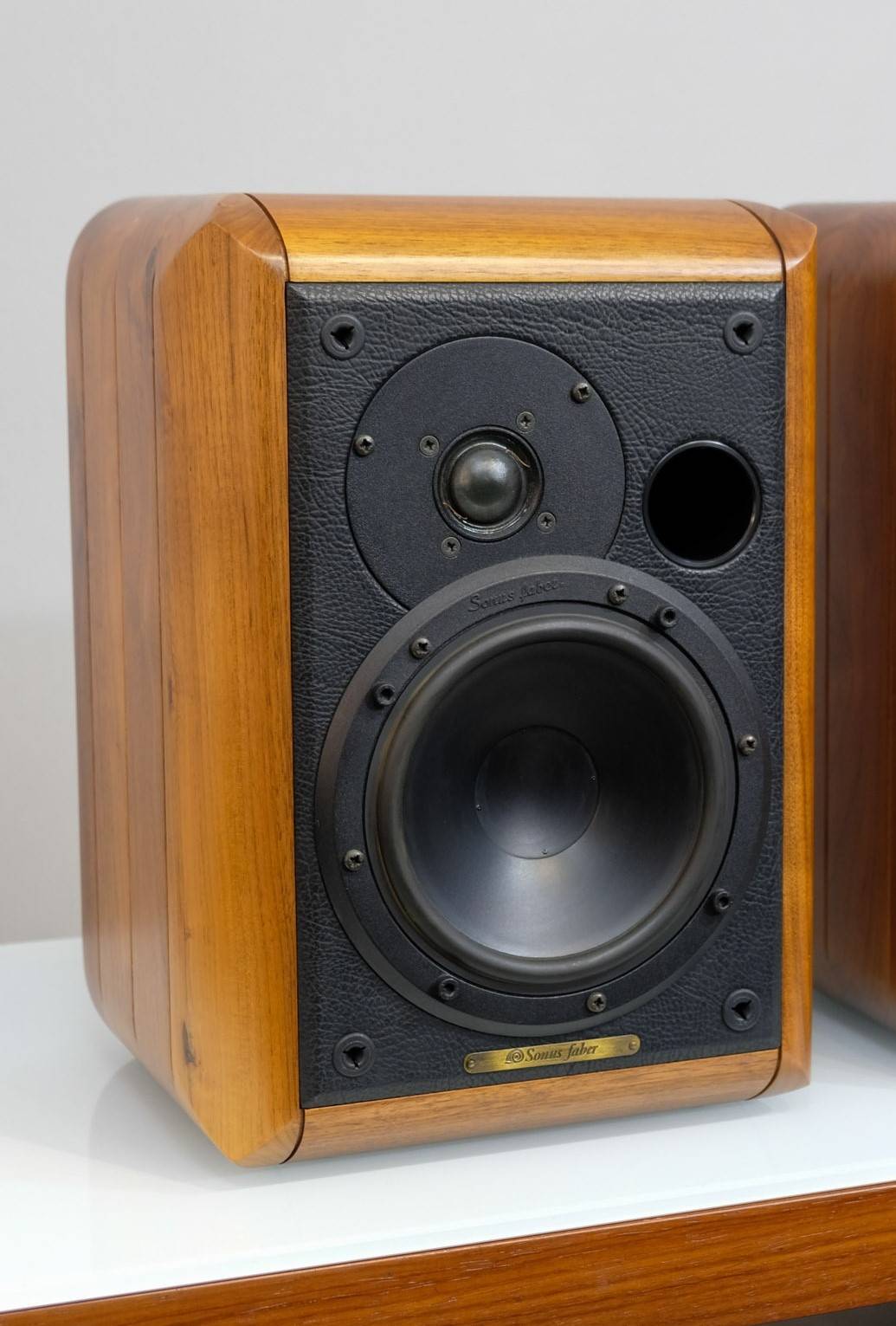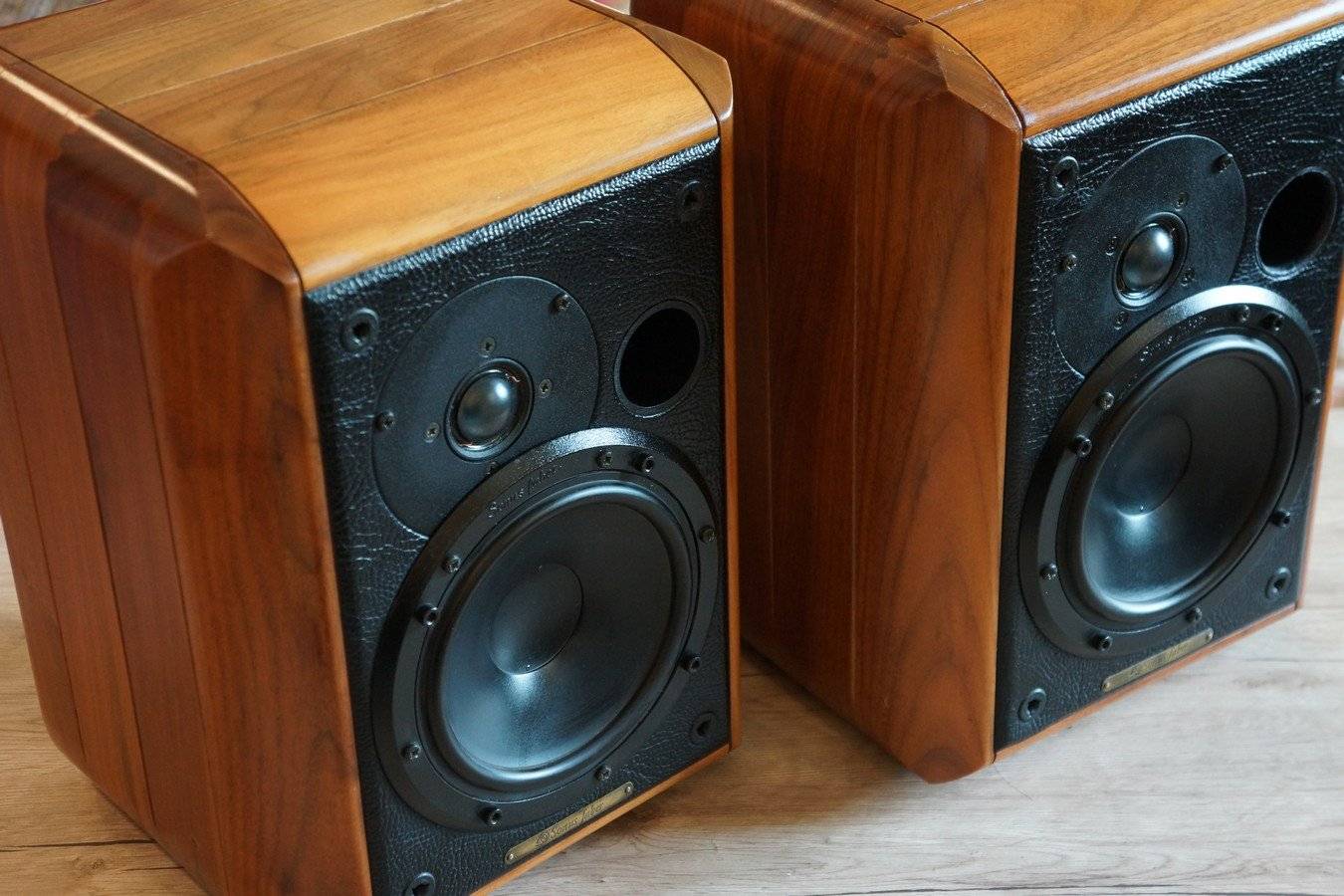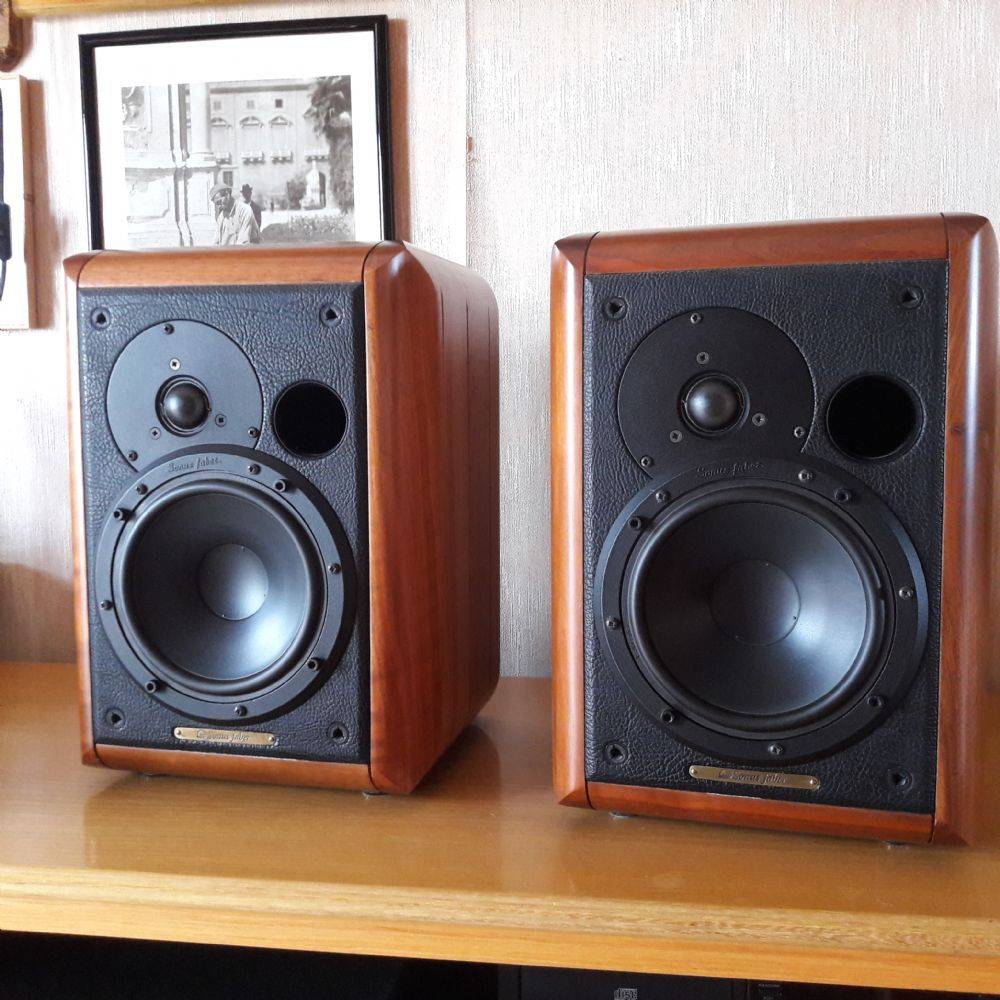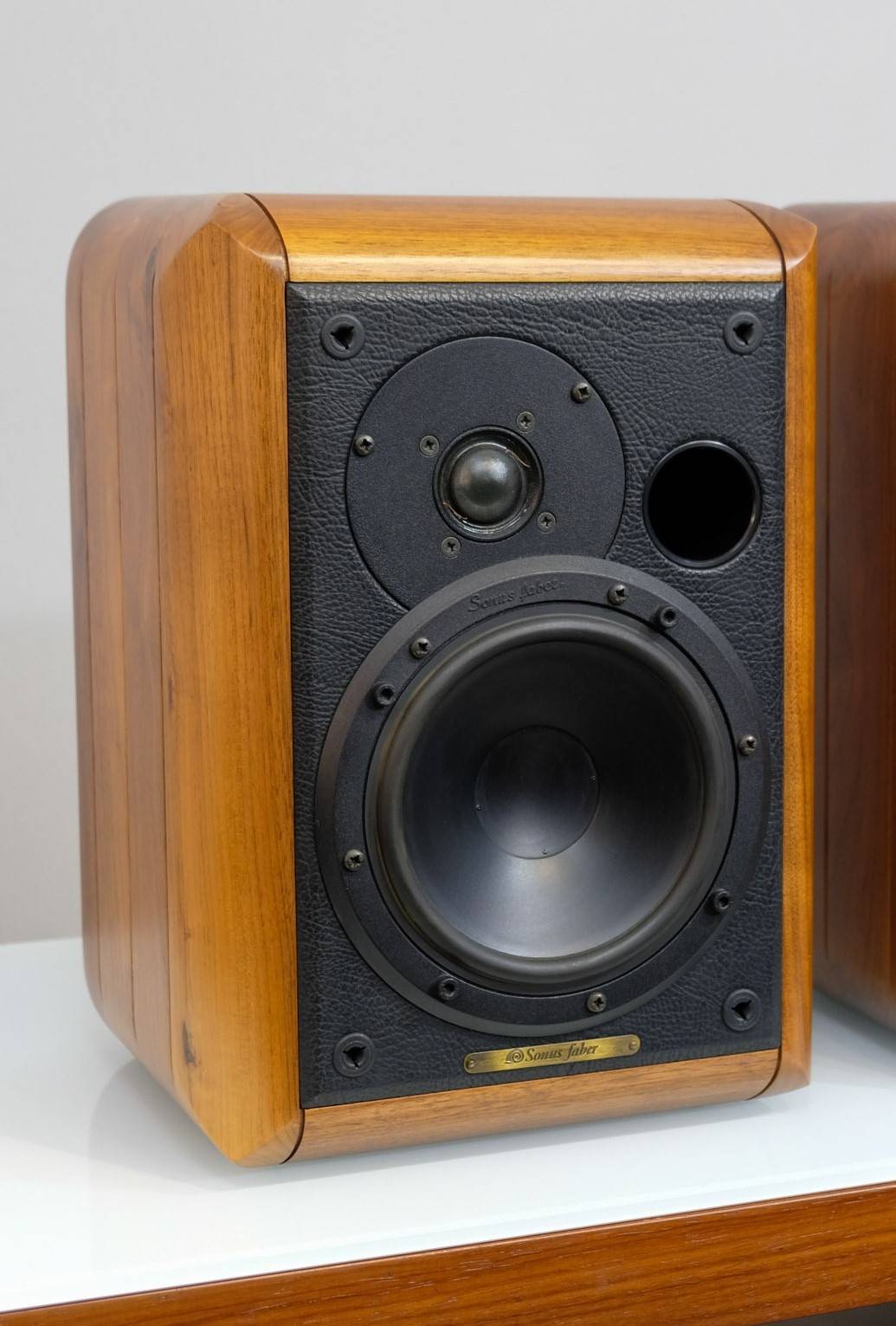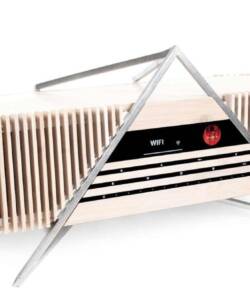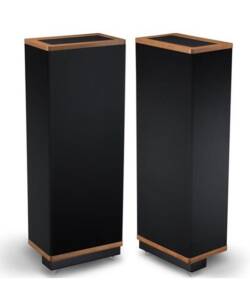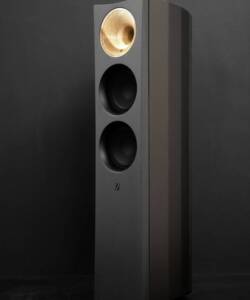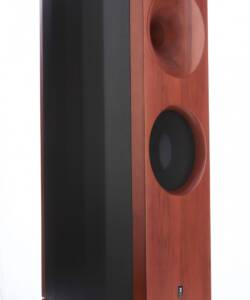Sonus Fabel Electa Bookshelf Speakers (Stunning Stands)
Original price was: R88,000.00.R21,000.00Current price is: R21,000.00.
Description
‘When the moon hits your eye like a big pizza pie…’ I love Things Italian, from my buzzy little Fiat Uno to Tameo models to Borsalino hats, spumoni to Sabrina’s cantileverage. Dunno why; my sense of ‘style’ was never pronounced and (visual) aesthetics is not an overriding preoccupation. It’s just that the Italians, from Bugatti to Giugiaro, always seem to get it right.
Aside from a reputation for automotive unreliability rivalled only by Great Britain, Italy is regarded as a nation of craftsmen. It was only a matter of time before one of them turned to audio equipment, not counting those weird Galactron goodies of yore, and I couldn’t wait to see what the children of Leonardo and Cellini and Michaelangelo would do with aluminium faceplates and/or wooden boxes. My first taste of Italian audio cuisine was the Sonus Faber Electa loudspeaker and I was not disappointed.
What knocked me out was the Electa’s panache, the way it balanced every aspect of speaker performance in the same way that it addressed the speaker’s physical presentation. The latter is so remarkable that the Electa’s beautiful cabinetry overshadows its actual performance, the mouthwatering visuals being so striking that most Electas are probably sold on looks alone. Fortunately, the sounds delivered by what is, in reductio, nothing more than a fairly small two-way box are so utterly musical that any inherent weaknesses are rendered insignificant by its overall ‘whole’. In other words, it’s not just a pretty face.
Remember that the Electa, despite some minor chestiness and a rather brutal way of showing up the partnering power amplifiers, has the capability to swing with the music, to respond to the power of the music without breaking up (or breaking down) and it can deliver the high levels and a huge soundstage which belie its size. It is to other high-priced mini-monitors what Italian supercars are to German supercars. The former have soul, the latter have technical brilliance. And given the choice, I’d always opt for James Brown over James Last.
With this in mind, what on earth could Sonus Faber possibly offer with the Electa Amator? It differs mainly in details, the most obvious being its cabinet profile, with sloped rear baffle and
rear- rather than forward-firing port. The enclosure size of the Amator is 220x370x350 WHD to the Electa’s 240x380x270 WHD, narrower, slightly shorter but a fair bit deeper. What gives away the identity of the dearer model is the sculpting around the mid/bass driver, which is too wide for the narrower baffle of the Amator.
In order to keep the Sonus Faber ‘look’ of curved edges, while at the same time trying to accommodate the 180mm driver as used in the Electa, the company cooked up some amazing woodworking techniques which curve the cabinet sides around the edges of the
driver. The result is a cabinet which bulges a third of the way up, and the grille frame has been shaped to compensate for this styling fillip. Under the grille, it’s the same leather-clad
baffle, but now the speakers are arrayed vertically instead of offset. This is possible partly because of the relegation of the port to the rear and also by cutting away (as per the Electa) a
fair portion of the 28mm tweeter’s surround plate to allow for close coupling of the woofer to the tweeter. Given the two drivers used by Sonus Faber for this design, there’s no way to
set the centres of the drivers any closer together unless they suddenly merge to become a coaxial.
Although the drivers have the same dimensions and near-identical appearance as those used in the Electa, they differ in a number of ways. The mid/bass drivers’ cones have been treated with a carbon/acrylate coating to decrease resonance and improve linearity, and the drivers are matched in pairs to ridiculously close tolerances at the factory. For the upper frequencies, Sonus Faber has unearthed a new, special driver dubbed the T330D Esotar, originally created by Dynaudio for the professional market. This 28mm dome tweeter is built to zero-tolerance and costs Sonus Faber L.1,000,000 per pair, or roughly #480 at today’s exchange rates, just for the tweeters. The speakers arrive with a protective wire construct in front of the tweeter
which can be removed for those prepared to eliminate this insurance policy in favour of slight sonic gains.
As with the Electa, the Amator is supplied ready for bi-wiring, with easily-removed gold-plated links connecting the four gold five-way binding posts. As before, the owner is treated to solid
Brazilian hardwood and Italian walnut, handcrafted to form an aesthetically pleasing, non-resonant cabinet weighing 15kg; it smacks of fine furniture as much as it does of hi-fi. Sensitivity is high at 88dB for 1W at 1m, and the company recommends amplifiers in the 30-200W range. Sonus Faber specifies the frequency response as 45-30kHz, +/-3.0dB, and the impedance is a safe 8 ohms. But don’t think for one minute that this speaker will work will with mid-fi amplification.
Read more about the Electas on Page 2.
Considering the hefty price tag of #2250, I had no qualms about
auditioning the Amators solely with high-end products. Front ends
consisted of the Oracle Delphi Mk III and SME Series V tonearm with
Audio-Technica AT-ART1 and Ken Chan Koetsu cartridges, the CAL Tempest
SE CD and Marantz CD-12 players, the Audio Research SP-9 and SP-14
preamps and Aragon 4004, Radford MA50 and Beard P100 monoblock
amplifiers. Wires included Master Link and MAS speaker cables, Lieder
cables, as well as Mandrake and YFERE/YBLENT interconnects. The
speakers were auditioned in a room large enough and dead enough to
eliminate room acoustics as a variable. I sited the Sonus Fabers on
Partington Dreadnought II stands, with Blu-tack above and spikes below.
Aging gracelessly, I’m becoming more and more stubborn about the
music to which I subject myself for at least 40 hours per week. Even
so, I forsook the soul music long enough to try the Amators with as
many genres as I could, beginning with a frighteningly lifelike
recording of the harpsichord (yes, sceptics, I have heard one up
close), Michel Keiner’s performance of Bach’s
Goldberg Variations on Associations Cercle Kallistos CK 1004. (This is
a limited edition LP recorded with purist techniques, in collaboration
with YBA of France.) Along with one or two
Sheffield Lab releases, it’s one of the best ‘lone instrument’
recordings I’ve ever heard, even if it does make me want to don a
powdered wig. What it showed about the ‘super’ tweeter in the
Amator is that the dearer speaker is even faster and cleaner than the
Electa, and that its top end transparency with the grille in situ
matches the Electa with the grille removed.
The ‘speed’ of this speaker is its most remarkable strength relative
to the dearer model, although the gains in bass performance were as I
expected. Everything that should sound
crisp has clean, smear-free edges to the notes, and the percussive
aspects of that venerable keyboard were not compromised in the least.
Moving to acoustic guitar recordings
showed the same strengths, with the added attraction of rich woody
resonances, while a capella (the King’s Singers in particular) showed
an almost complete removal of the chestiness noted with the smaller
Sonus Fabers.
Speaking of ‘smaller’, the dearer model’s slimmer baffle resulted in
even better imaging capability, especially in terms of image
specificity. The lessening of reflections by shrinking the baffle is a
well-known practice; with the Amator, it means that the Sonus system
more closely approximates a point source than does its predecessors,
and in this respect it seemed more like the dream I’ve harboured for so
long: an LS3/5A with testicular fortitude.
What both the Amator and the less expensive Electa offer over all
other quality mini-monitors — besides the finest cabinetry ever seen
on a hi-fi product — is the ability to go loud, to rock
hard and to convey power without the listener ever knowing that the
speaker is no bigger than the monitor on a PC. The LS3/5A — even the
new, improved version — can’t take the hammering you can dish out to
the Sonus Fabers, always sounding like it’s going to explode at any
minute, while the SL700 simply gives up when driven to hard, sounding
almost like a valve amp that’s been asked to do too much. As for the
WATT, well, I’ve already written many a word about how it’s more of a
reviewer’s tool than a hi-fi product, so the comparisons aren’t
worthwhile until I try the Mk II, which is a far more ‘universal’
product. But for playback levels and sheer dynamics, the Amator is now
the one to beat.
Ask any audiophile, though, what he or she wants out of a small
loudspeaker and they’ll say ‘bass’ before they say ‘level’ or
‘dynamics’. The Electa is good enough to satisfy all but those
who were weaned on IMFs or big Infinity systems; the Amator’s extra 5Hz
is enough to offer a perceptible gain in ‘weight’ on the kind of
material able to inspire it. With Bang, Baroom and
Harp, it was possible to fool yourself into thinking that here was a
speaker standing a lot taller than Danny Devito, with woofers the size
of dinner plates. The long throw of the woofer,
the tuned port, the stone-dead cabinet and 400 watts’ worth of Aragon
or Beard power all combined to make the Amator the ultimate choice for
the space-shy, bass-hungry audiophile
(Well-Heeled Div.).
If there are grounds for complaint, it’s only when you audition
these side by side with some monster system like Divas, with seemingly
infinite bass extension, or the WATTs themselves, which have yet to be
matched, in my experience, for sheer precision in terms of
image-shaping. The transparency, probably the best I’ve heard from a
box with cones and domes, is exceeded by planar systems, but they are,
invariably, more space-consuming, even if the footprint is tiny (eg
Martin-Logan Sequels). So, forgetting about the non-box alternatives,
we’re left with what I think is simply the best all-round small box
currently available, regardless of price. I can think of panel systems
I’d prefer at the price or less, but no panel can sneak past the
house-proud spouse the way this little beauty can. It’s almost criminal
that something this pretty can be this wonderful. I hate to put it in
such a sexist manner, but I think I’ve found the hi-fi equivalent of a
bimbo with brains. And I love it.
